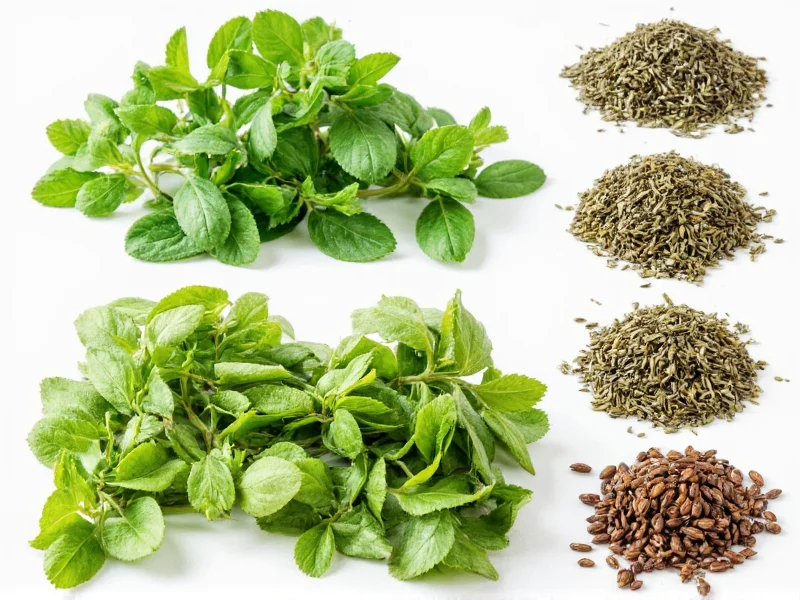Understanding herb conversions is essential for consistent cooking results. When recipes call for specific herb measurements, substituting fresh for dried (or vice versa) without proper conversion can dramatically alter your dish's flavor profile. The 3:1 ratio serves as a reliable starting point, but several factors influence the precise conversion needed for optimal results.
Why the 3:1 Conversion Ratio Works
Fresh herbs contain approximately 80-90% water, while dried herbs have most moisture removed. This concentration process intensifies the essential oils and flavor compounds. Dried herbs typically deliver three times the flavor punch of their fresh counterparts by volume. However, this ratio isn't absolute—some herbs concentrate differently based on their cellular structure and oil composition.
Herb-Specific Conversion Guidelines
While the 3:1 rule applies to most herbs, certain varieties require special consideration. Delicate herbs like basil and cilantro lose more volatile compounds during drying than hardy varieties like rosemary and thyme. This affects their relative potency when converted.
| Common Herb | Fresh Measurement | Dried Measurement | Special Notes |
|---|---|---|---|
| Basil | 1 tbsp | 1 tsp | Use 1/2 tsp for older dried basil |
| Parsley | 1 tbsp | 1 tsp | Fresh provides brighter flavor |
| Rosemary | 1 tbsp | 1.5 tsp | More potent when dried |
| Thyme | 1 tbsp | 1.5 tsp | Leaves detach easily when dried |
| Oregano | 1 tbsp | 1.25 tsp | Dried often preferred for cooking |
| Cilantro | 1 tbsp | 0.75 tsp | Fresh provides distinct flavor |
Practical Substitution Techniques
When converting fresh to dried herbs in recipes, consider these professional techniques for best results. Add dried herbs earlier in the cooking process to allow time for rehydration and flavor release. For soups and stews, incorporate dried herbs during the simmering phase. In contrast, add fresh herbs near the end of cooking to preserve their delicate flavor compounds.
Always crush dried herbs between your fingers before adding them to dishes. This action breaks open the cellular structure, releasing essential oils and maximizing flavor impact. For baked goods and dry rubs, consider using 25% less dried herbs than the standard conversion suggests, as prolonged dry heat intensifies their potency.
Adjusting for Herb Quality and Age
The conversion ratio requires adjustment based on herb freshness and storage conditions. Dried herbs lose potency over time—those stored longer than six months may need a 20-30% increase in quantity. Fresh herbs nearing spoilage provide less flavor intensity than crisp, newly purchased varieties.
When working with home-dried herbs versus commercially processed varieties, expect differences in concentration. Home-dried herbs typically retain more volatile compounds when air-dried slowly at room temperature, potentially requiring slightly less quantity than store-bought dried herbs.
Common Conversion Mistakes to Avoid
Cooks frequently over-season when substituting dried for fresh herbs. Remember that exceeding the 3:1 ratio often creates overpowering, medicinal flavors. Never substitute equal volumes—using 1 tablespoon of dried herbs instead of fresh will likely ruin your dish.
Consider the dish's liquid content when converting. In low-moisture recipes like spice rubs or bread dough, reduce dried herb quantities by 25% from the standard conversion. The absence of liquid prevents proper flavor dispersion, concentrating the herb impact.
Storage Impact on Conversion Accuracy
Proper storage directly affects herb potency and thus conversion accuracy. Store dried herbs in airtight containers away from light and heat to maintain consistent strength. Fresh herbs keep best when stems sit in water (like flowers) with a loose plastic bag covering the leaves.
Dried herbs maintain peak potency for 6-12 months, while fresh herbs typically last 1-3 weeks refrigerated. As dried herbs age, gradually increase quantities by 10-25% to compensate for flavor degradation. Always smell herbs before use—if the aroma is faint, you'll need more to achieve proper seasoning.











 浙公网安备
33010002000092号
浙公网安备
33010002000092号 浙B2-20120091-4
浙B2-20120091-4